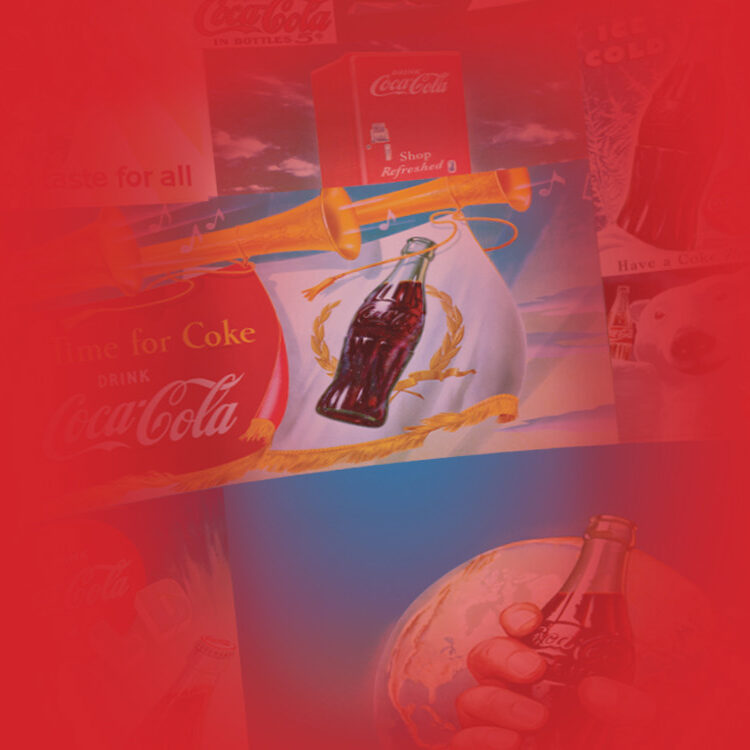1. Introduction: The Fascination with Randomness and Its Role in Nature and Technology
Randomness is a concept that both mystifies and underpins many aspects of our universe. From the unpredictable flicker of a candle flame to the complex algorithms securing our digital communications, randomness manifests in countless ways. It captures our curiosity because it appears to introduce chaos into order, yet often reveals an underlying structure upon closer examination. Understanding why randomness is both intriguing and essential helps us unlock secrets across scientific disciplines and technological innovations.
In everyday life, we encounter randomness in weather patterns, genetic mutations, and even in the distribution of flavors in a candy box. In science and engineering, harnessing randomness enables breakthroughs in cryptography, materials science, and physics. For example, the security of online transactions relies on unpredictable keys generated through random processes, while the properties of new materials often depend on controlled structural randomness at the atomic level.
Contents
- The Science of Randomness: Foundations and Mathematical Frameworks
- Randomness in the Physical World
- Unlocking Complexity: From Mathematical Abstractions to Real-World Examples
- The Magic of Randomness in Nature and Everyday Life
- Starburst as a Modern Illustration of Randomness and Order
- Beyond the Surface: Deepening the Understanding of Randomness with Advanced Concepts
- Practical Applications and Future Directions
- Conclusion: Embracing the Magic of Randomness from Science to Sweet Surprises
2. The Science of Randomness: Foundations and Mathematical Frameworks
a. Basic concepts: chance, probability, and stochastic processes
At its core, randomness involves outcomes that are unpredictable yet statistically analyzable. Probability theory provides the mathematical language to describe the likelihood of different events. For instance, rolling a die results in a number from 1 to 6, each with a probability of 1/6, exemplifying a simple stochastic process. These principles underpin many algorithms and natural phenomena where chance plays a role.
b. Deep dive into modular arithmetic and prime structures
A crucial mathematical foundation in modern cryptography, especially in algorithms like RSA, involves modular arithmetic and properties of prime numbers. Modular exponentiation—calculating powers within a fixed range—relies on prime factorization’s difficulty to create secure encryption keys. For example, choosing large prime numbers p and q and computing n = p × q makes it computationally infeasible for attackers to factor the product, thus safeguarding sensitive information.
| Concept | Application |
|---|---|
| Modular Arithmetic | Cryptography, hash functions |
| Prime Numbers | Encryption keys, primality testing |
| Stochastic Processes | Modeling stock markets, natural phenomena |
c. Topological and algebraic measures: the fundamental group π₁
Topology provides tools to understand the structure of space through properties preserved under continuous deformations. The fundamental group (π₁) captures the idea of “holes” or “loops” in a space, serving as a measure of its complexity. For example, a doughnut-shaped object (torus) has a different π₁ than a sphere, reflecting its inherent “holes.” This concept helps scientists analyze complex structures, from molecular arrangements to cosmic topology, illustrating how abstract mathematics can describe real-world randomness and order.
3. Randomness in the Physical World: From Atomic to Cosmic Scales
a. Quantum mechanics: the inherently probabilistic nature of particles
Quantum physics reveals that at the smallest scales, particles behave probabilistically. Principles like Heisenberg’s uncertainty principle state that certain properties, such as position and momentum, cannot be simultaneously known with certainty. This intrinsic uncertainty means that the behavior of electrons or photons is fundamentally unpredictable, embedding randomness into the fabric of the universe. Experiments like radioactive decay further demonstrate this probabilistic nature, where the exact moment of decay cannot be precisely predicted, only the likelihood over time.
b. Crystallography: understanding crystal plane orientations via Miller indices (hkl)
Crystallography explores how atoms arrange themselves in solids. Miller indices (hkl) are a notation system that classifies the orientation of crystal planes within a lattice. These planes influence a material’s properties, such as strength, reactivity, and optical behavior. While atomic arrangements exhibit a highly ordered structure, the way these planes intersect or form defects introduces a form of structured randomness. This balance between order and randomness is vital for understanding material behaviors and designing new substances.
4. Unlocking Complexity: From Mathematical Abstractions to Real-World Examples
a. The role of randomness in materials science and crystallography
Materials scientists leverage the concept of structured randomness to engineer properties. For example, introducing controlled defects or grain boundaries in metals can enhance strength or ductility. Miller indices aid in predicting how these microstructures impact material performance, demonstrating how abstract mathematical classifications translate into tangible effects. This interplay of order and randomness allows for innovations such as stronger alloys or more efficient semiconductors.
b. Cryptography as an example of controlled randomness for security
In digital security, the RSA encryption algorithm exemplifies how controlled randomness ensures privacy. By selecting large prime numbers and performing modular exponentiation, encryption keys are generated that are practically impossible to factor or predict. This approach transforms randomness into a defensive tool, illustrating how understanding mathematical structures like prime distributions and modular arithmetic directly impacts our daily lives.
5. The Magic of Randomness in Nature and Everyday Life
a. How natural phenomena utilize randomness for evolution and adaptation
Evolution relies heavily on genetic variation, which arises through random mutations. These mutations introduce new traits that may be advantageous, neutral, or deleterious. Natural selection then acts on this variability, leading to adaptation. Similarly, weather systems are driven by complex, stochastic interactions among atmospheric variables, making long-term predictions challenging yet statistically manageable. These examples demonstrate how randomness fuels change and diversity in nature.
b. The apparent randomness of starburst patterns in celestial events
Cosmic phenomena such as supernovae or starburst galaxies present visually stunning displays that seem random but often have underlying order. The distribution of stars and cosmic rays involves stochastic processes influenced by gravitational dynamics and quantum effects. These structured patterns emerge from chaotic interactions, illustrating that even apparent randomness in the universe often encodes deeper order.
6. Starburst as a Modern Illustration of Randomness and Order
a. The visual and structural parallels between Starburst candies and stochastic structures
Starburst candies, with their vibrant colors and varied flavors, serve as a tangible example of structured randomness. The distribution of flavors and colors within a box appears chaotic at first glance; however, manufacturers use precise processes to ensure a balanced mix. This analogy helps illustrate how randomness can produce diverse yet controlled outcomes, mirroring complex natural and scientific systems.
b. Using Starburst to demonstrate probabilistic decision-making and randomness in consumer choices
Consumers often select Starburst flavors based on probability and preference, unknowingly engaging with stochastic decision-making. Researchers have studied such choices to understand consumer behavior and probabilistic models, which apply broadly from marketing strategies to AI algorithms. The randomness in flavor distribution and consumer selection exemplifies how probability influences everyday decisions.
c. Scientific experiments inspired by the randomness in Starburst’s composition and distribution
Scientists have conducted experiments simulating the random distribution of flavors in candies to model stochastic processes in materials science. For example, the way flavors spread within a box can mimic diffusion processes, helping students visualize complex concepts like entropy and randomness in tangible ways. To explore more about the science behind such phenomena, consider visiting advanced autoplay options e.g. limits.
7. Beyond the Surface: Deepening the Understanding of Randomness with Advanced Concepts
a. The role of entropy and information theory in quantifying randomness
Entropy, a concept from information theory, measures the degree of disorder or unpredictability in a system. High entropy indicates a system that is highly random and difficult to predict, such as the distribution of particles in a gas. Conversely, low entropy corresponds to ordered states. This metric allows scientists to quantify and compare randomness across different systems, from molecular arrangements to data encryption.
b. Topological insights: understanding complex structures through the fundamental group
Topology offers a powerful way to analyze the global structure of objects. The fundamental group π₁ helps classify spaces based on their “holes” or “loops.” For example, a coffee mug with a handle has a different π₁ than a sphere, reflecting its topological complexity. Applying this to natural and artificial structures reveals hidden order within apparent randomness, enriching our comprehension of complex systems.
8. Practical Applications and Future Directions
a. Harnessing randomness in algorithms, cryptography, and material design
Advances in understanding randomness enable innovations such as randomized algorithms that optimize complex computations, cryptographic protocols ensuring data security, and the design of new materials with tailored properties. For example, scientists are exploring how controlled atomic disorder can improve thermal resistance or electrical conductivity, leading to smarter, more resilient technologies.
b. Educational and artistic uses of randomness to foster creativity and scientific literacy
Visual and tactile examples like the distribution patterns in candies or abstract art inspired by stochastic processes serve as engaging tools to teach complex scientific ideas. They help demystify randomness, making abstract concepts accessible and inspiring curiosity. Incorporating such approaches in education promotes a deeper appreciation of the interconnectedness between science, art, and everyday life.
9. Conclusion: Embracing the Magic of Randomness from Science to Sweet Surprises
“Within every random pattern lies an underlying order—a hidden harmony waiting to be uncovered.”
From the fundamental principles of topology and quantum mechanics to practical applications in cryptography and material science, the study of randomness reveals a universe rich with intertwined order and chaos. Modern examples like the distribution of flavors in candies such as Starburst serve as accessible illustrations of these timeless principles. Embracing this duality encourages curiosity, innovation, and a deeper understanding of the unseen structures shaping our world.

